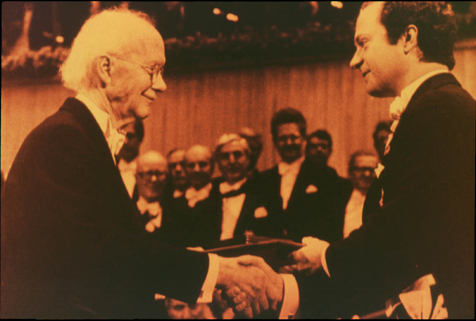
Faculty Research 1980 - 1989
Genetically haploid spermatids are phenotypically diploid.
Document Type
Article
Publication Date
1989
Keywords
Genes, Growth-Hormone, Haploidy, Male, Mice, Mice-Transgenic, Nucleic-Acid-Hybridization, Phenotype, Protamines, Spermatids, Spermatogenesis
First Page
373
Last Page
376
JAX Source
Nature 1989; 337(6205):373-6.
Abstract
Because chromosomal homologues segregate from one another during meiosis, spermatids are genetically different. Post-meiotic gene expression could lead to gametic differences, some of which might lead to preferential transmission of certain alleles over others. In both insects and mammals, however, all the cells derived from a single spermatogonial cell develop within a common syncytium formed as a result of incomplete cytokinesis at each of the mitotic and meiotic cell divisions. It has been proposed that the intercellular bridges connecting the cells, which are about 1 micron in diameter, permit the sharing of cytoplasmic constituents, thus ensuring the synchronous development of a clone of cells and gametic equivalence between haploid spermatids. By analysing the product of a transgene which is expressed exclusively in post-meiotic germ cells in hemizygous transgenic mice, we have shown that genetically distinct spermatids share the product of the transgene and hence can be phenotypically equivalent.
Recommended Citation
Braun RE,
Behringer RR,
Peschon JJ,
Brinster RL,
Palmiter RD.
Genetically haploid spermatids are phenotypically diploid. Nature 1989; 337(6205):373-6.

